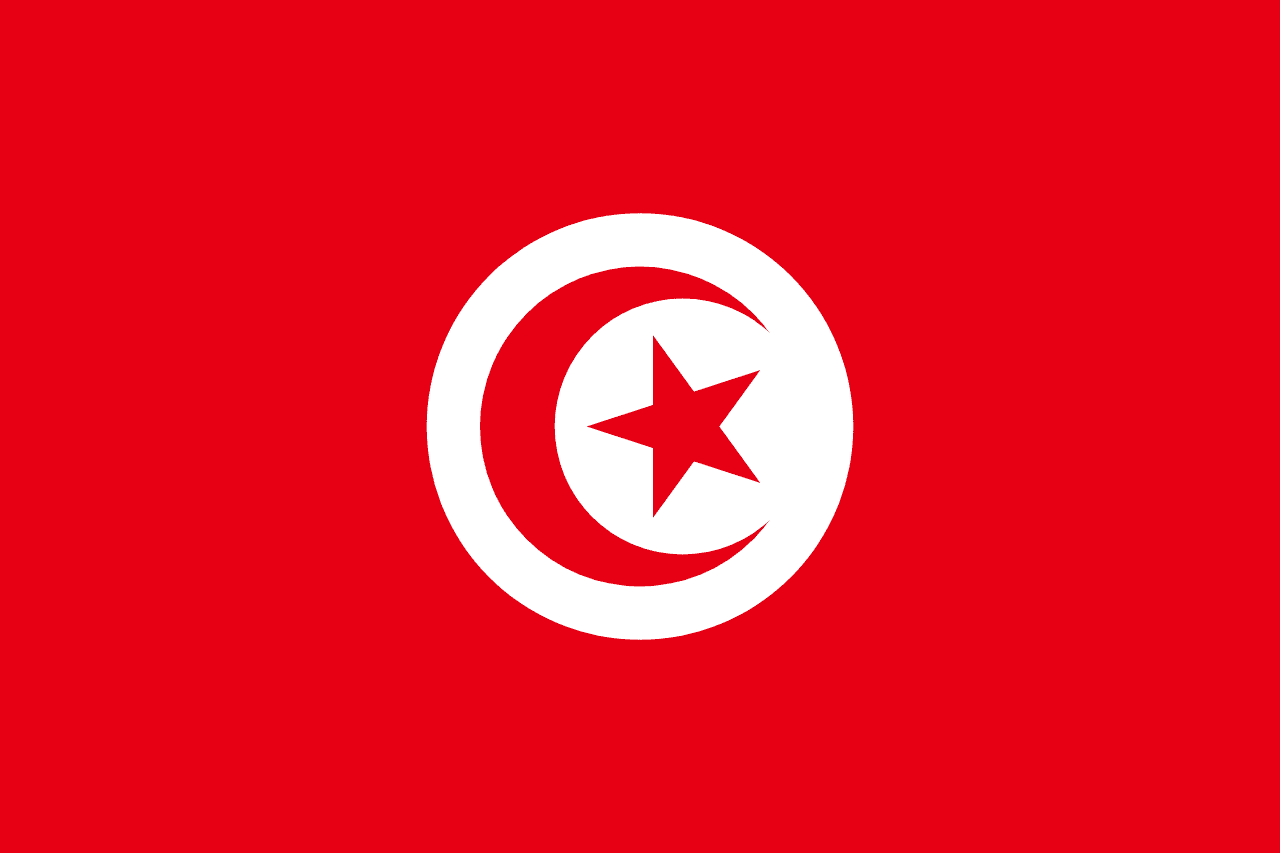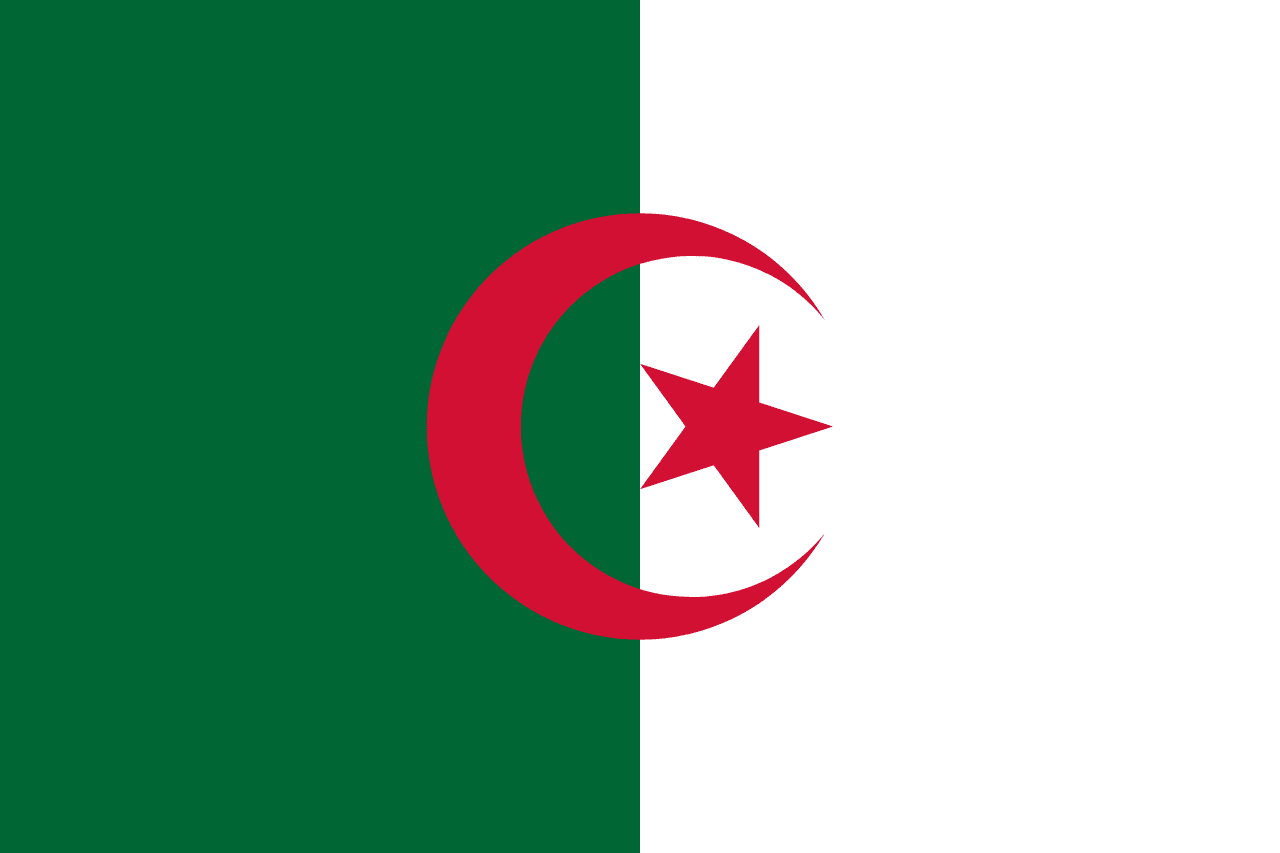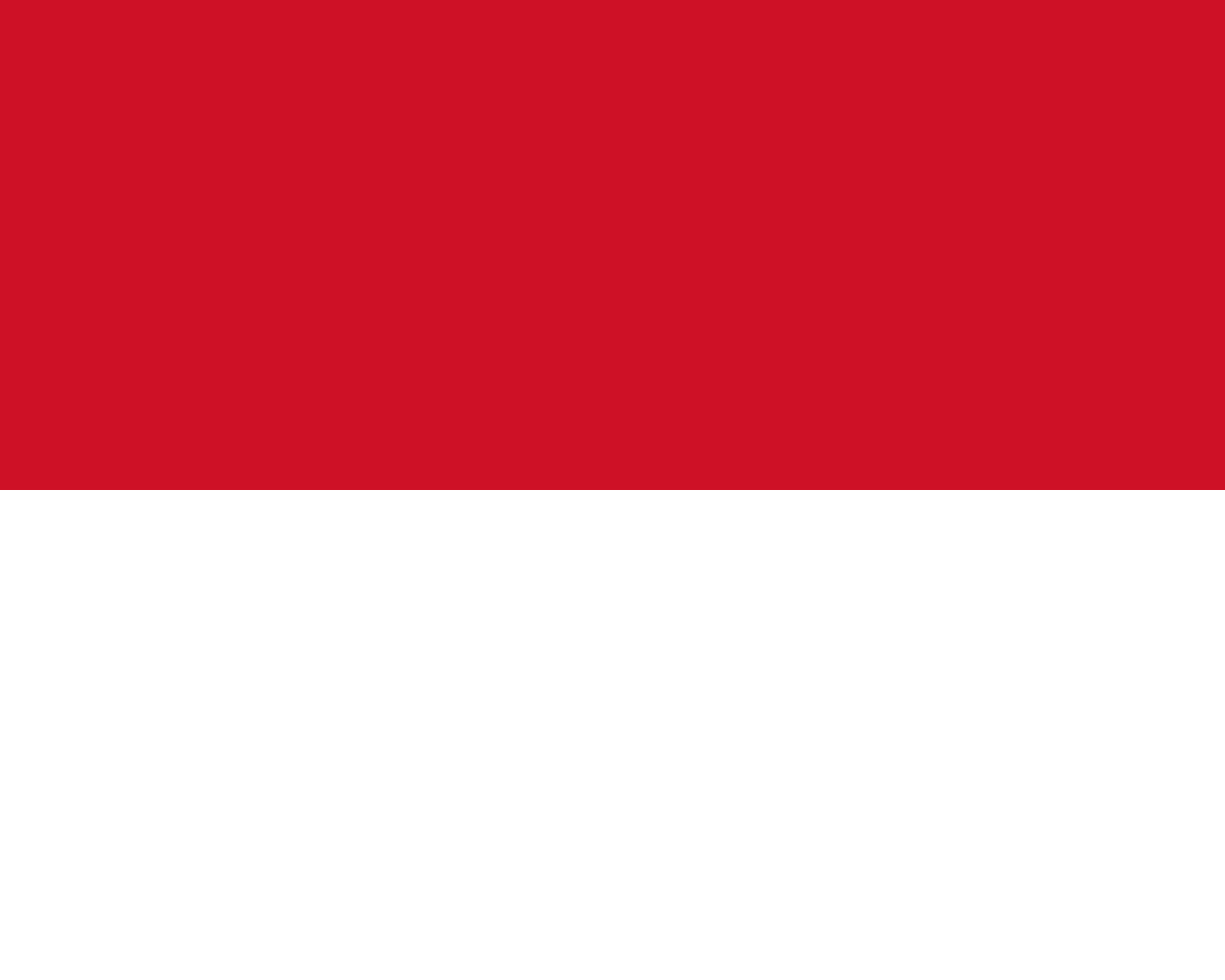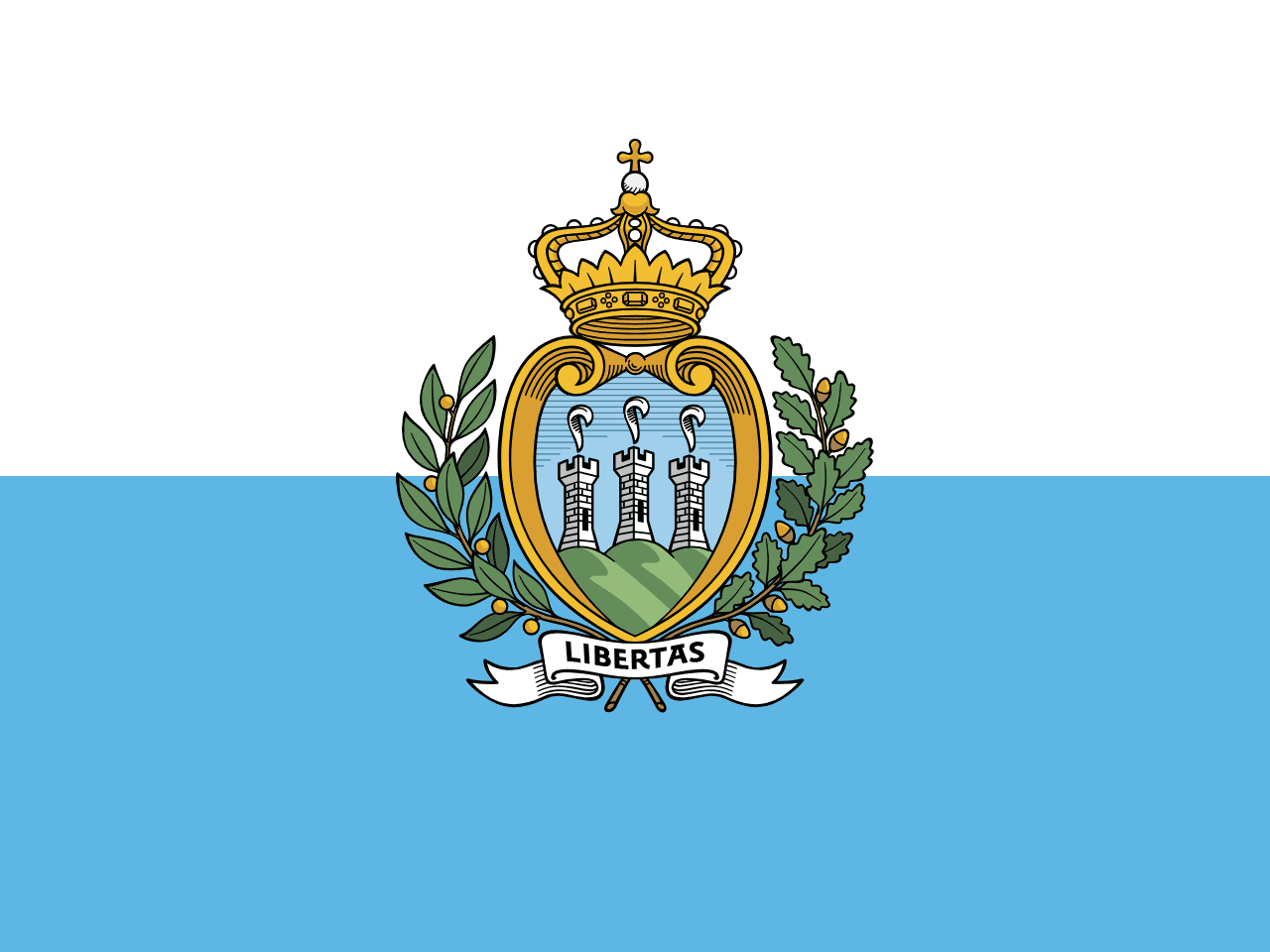Tunisia Flag Meaning
A red field with a white circle in the center containing a red crescent moon and five-pointed star, representing the blood shed for independence, purity and peace, Islam, and the unity of all Muslims, based on the Ottoman flag but with distinct Tunisian characteristics.
- Continent
- Africa
- Adopted
- 1959
- Ratio
- 2:3
- Colors
- red, white
- Designer
- Unknown

Symbolism
Red Field: Represents the blood shed by martyrs in the struggle for independence from French colonial rule, symbolizing the sacrifices made by Tunisians throughout their history to defend their homeland and achieve freedom.
White Circle: Represents peace, purity, and the sun, symbolizing Tunisia's desire for harmony among all its citizens and the bright future of the nation as it emerged from colonial rule into independence.
Red Crescent: Represents Islam, the religion of the majority of Tunisians, symbolizing the spiritual foundation of Tunisian society and the connection to the broader Islamic world and Ottoman heritage.
Red Five-Pointed Star: Represents the five pillars of Islam and the unity of all Muslims, symbolizing the religious guidance that shapes Tunisian culture and the nation's place in the Islamic community.
Ottoman Heritage: The design reflects Tunisia's history as part of the Ottoman Empire while establishing a distinct national identity separate from Turkish rule and French colonialism.
History
- 814 BC-146 BC: The ancient city of Carthage, located in modern-day Tunisia, became one of the most powerful civilizations in the Mediterranean, rivaling Rome until its destruction in the Punic Wars.
- 146 BC-439 AD: Roman rule brought prosperity and urbanization, with Tunisia becoming a major grain supplier for the Roman Empire and developing a thriving Latin Christian culture.
- 647-1574: Arab conquest introduced Islam and Arabic language, while various Islamic dynasties including the Aghlabids, Fatimids, and Hafsids ruled, making Tunisia a center of Islamic learning and culture.
- 1574-1881: Ottoman rule brought administrative reforms and relative autonomy under local beys, while Tunisia maintained its distinct identity and gradually modernized its institutions.
- May 12, 1881: France established the Protectorate of Tunisia through the Treaty of Bardo, beginning 75 years of colonial rule that introduced European education, administration, and economic systems.
- 1920s-1950s: The independence movement grew under the Neo Destour Party led by Habib Bourguiba, who combined Arab nationalism with modernist Islamic thought and demands for self-governance.
- March 20, 1956: Tunisia gained independence from France under President Habib Bourguiba, who implemented progressive reforms including women's rights, education, and secularization policies.
- July 20, 1959: The current flag was officially adopted along with Tunisia's first constitution, establishing the republic and formalizing the symbols of Tunisian national identity.
- 1957-1987: Bourguiba's long rule brought modernization and women's rights but also increasingly authoritarian governance, until he was removed by his prime minister Zine El Abidine Ben Ali.
- 1987-2011: Ben Ali's dictatorship brought economic growth and stability but also corruption, repression, and growing inequality that eventually sparked popular revolt.
- December 17, 2010: The Arab Spring began in Tunisia when fruit vendor Mohamed Bouazizi set himself on fire in protest, triggering nationwide demonstrations that led to Ben Ali's overthrow.
- 2011-Present: Tunisia's democratic transition has been the most successful of the Arab Spring countries, with a new constitution, free elections, and civil society freedoms, though economic challenges persist.
Trivia
- Tunisia is the birthplace of the Arab Spring, with the 2010-2011 revolution that began the wave of uprisings across the Middle East and North Africa.
- The flag represents the only Arab Spring country to successfully transition to stable democracy, earning Tunisia the nickname 'the exception' in the region.
- Tunisia is home to the ancient city of Carthage, once Rome's greatest rival, and the site where Hannibal began his famous march across the Alps with elephants.
- The country has seven UNESCO World Heritage Sites, including the well-preserved Roman amphitheater at El Jem and the medina of Tunis with its ancient Islamic architecture.
- Arabic and Berber (Tamazight) are the official languages, though French is widely spoken due to colonial history, and Tunisian Arabic has distinctive characteristics.
- Tunisia is the world's second-largest producer of olive oil after Spain, with olive cultivation dating back over 3,000 years and forming a central part of the economy.
- The flag flies over a country that was among the first in the Arab world to grant women extensive rights, including the right to vote, work, and initiate divorce since the 1950s.
- Traditional Tunisian architecture features distinctive blue and white buildings, particularly in the coastal town of Sidi Bou Said, which has become an iconic symbol of the country.
- Tunisia has a rich musical tradition including malouf (classical Andalusian music), traditional folk songs, and modern rai music that blends Arab and Berber influences.
- The country's strategic location has made it a crossroads of civilizations, with Phoenician, Roman, Arab, Ottoman, and French influences all contributing to its cultural heritage.
- Tunisian cuisine features dishes like couscous, brik (pastry with egg), harissa (spicy paste), and mint tea, reflecting Mediterranean, Arab, and Berber culinary traditions.
- The flag represents a country where tourism is a major industry, attracting visitors to ancient ruins, Mediterranean beaches, and the Sahara Desert in the south.
- Tunisia has made significant progress in education and healthcare, achieving high literacy rates and life expectancy compared to other African and Arab countries.
- The country faces economic challenges including high unemployment, regional development disparities, and the need to diversify beyond agriculture and tourism.
- Despite being a small country, Tunisia punches above its weight in international affairs, playing active roles in African Union, Arab League, and Mediterranean cooperation initiatives.
Related Countries

Malta
Europe
Two vertical stripes of white and red with the George Cross in the upper left corner, representing Malta's courage during World War II and its historical significance in the Mediterranean.

Italy
Europe
Three equal vertical stripes of green, white, and red, known as 'Il Tricolore,' representing the Italian Republic and embodying the values of hope, faith, and charity that unite the Italian peninsula.

Algeria
Africa
Two equal vertical stripes of green and white with a red crescent and five-pointed star centered on the dividing line, representing Islam, peace, and the blood of martyrs who died for independence.

Monaco
Europe
Two horizontal stripes of red and white derived from the heraldic colors of the House of Grimaldi, representing one of the world's smallest sovereign states and oldest ruling dynasties.

Libya
Africa
Three horizontal stripes of red, black, and green with a white crescent and five-pointed star centered on the black stripe, representing Libya's return to its royal heritage after the 2011 revolution and the unity of its three historical regions.

San Marino
Europe
White and light blue horizontal bicolor with coat of arms featuring three towers representing the ancient fortress republic on Mount Titano.